Yasmine Laraqui
ACENTRICSPACE第119位驻地艺术家
2024年5 6月驻地艺术家
Yasmine Laraqui
No. 119 ACENTRICSPACE Resident Artist
May June Resident Artist, 2024
Yasmine Laraqui
关于艺术家 About the Artist

Although physical geographies seem to echo hostility, the utopic notion of world society has never been as technically reachable as it is through the digital. The internet has enabled a wider map of representations doubled with an instant way of accessing information.
More importantly, the digital revolution made us aware of our contemporaries and their ideas, all around the world and in real-time. For the art world, the internet appears to be the perfect space for experimenting with borderlessness, multicultural appreciation, and finally, fully digital formats. Since everyone produces images, everyone produces information. Paradoxically, because of the accuracy of algorithm targeting, this supposedly widens the spectrum of diverse information and ends up looking like a comfortable bubble of pleasing and like-minded data sharers.
Thirty years ago, Flusser wrote that we were entering a Post-historical and dimensionless era through and within which all our information would merge to form a“global brain”. this visionary statement raised sociological implications including mutational notions of cultures and the contemporary relevance of nationality within cyberspace worldwide.
With an interest in cultural studies, I delved into post-colonial studies, I started thinking of the notion of identification on a broader spectrum- that of a global phenomenon motivated by concurrent ideologies. Being simultaneously familiar and distant from the culture I am assimilated to, my work aims to remap the idea of a North-South/ East-West culture shock. I transport the viewer into cultural identities’ explorations, questioning the socially accepted symbols and frames of reference that shape the given identity. My work, very much like postmodernism’s deconstruction of socio-cultural understanding, is a journey into the de-contextualization of codes and conduct.
Reshaping of accepted belief, which inherently injects emotions of confusion, and discomfort – all emotions that oil the wheel of thought and perspective. Through the use of visually pleasing mass multimedia installations, I can translate thought into experience, offering a fluid platform for reflection. Consequently, this investigation into the processes of identification can be seen as social determinism and perhaps results in personal acculturation.
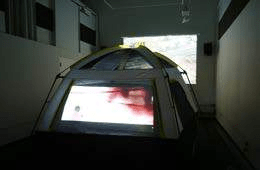
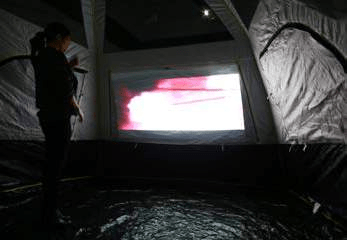
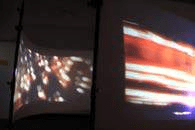
在摩洛哥阿拉伯之春起义之后,亚斯明·拉拉基 (Yasmine Laraqui) 反思了从抗议到狂欢派对等大规模示威活动的全球吸引力。她质疑群众集会的美学 – 如实时和在线体验 – 在多大程度上压倒了其社会评论或政治革命的表面目标。
In the wake of the Moroccan Arab Spring uprising, Yasmine Laraqui reflects on the global allure of mass demonstrations, from protests to rave parties. She questions the extent to which the easthetics of mass gatherings – as experienced in real-time and online – have overwhelmed their ostensible aim of social commentary or political revolution.
Bonnie Yochelson, art curator
Yasmine Laraqui是一位来自摩洛哥的女艺术家,她通过自己的作品不断引发阿拉伯世界对女性身份的主流思考。Laraqui的视频在很多方面都与Tiger的作品主题产生了共鸣。她在放映中展示的作品《闪闪发光的莫洛托夫》是一部关于革命的短片。通过将中东各地抗议活动的镜头与压倒性的西式社交媒体生活和派对的图像并置在一起,她通过女性视角对革命幻想和乌托邦梦想的狂热进行了批判。
A female artist originally from Morocco, Yasmine Laraqui continuously provokes mainstream thoughts on female identities in the Arabic world through her work. Laraqui’s video resonates with the themes of Tiger’s work in many ways. The work she presents at the screening, Sparkling Molotov, is a short video on revolution. By juxtaposing spectacular images both from footage of protests all over the Middle East and images of overwhelming Western-style social media lives and parties, she offers a critique of the fanaticism of revolution fantasies as well as utopian dreams through her female perspective.
Tiger Cai
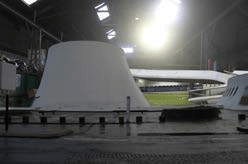
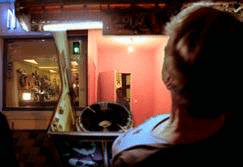

Impossible Spaces is a series of composite digital photographs layering real-life architectures.
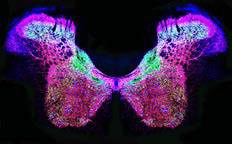
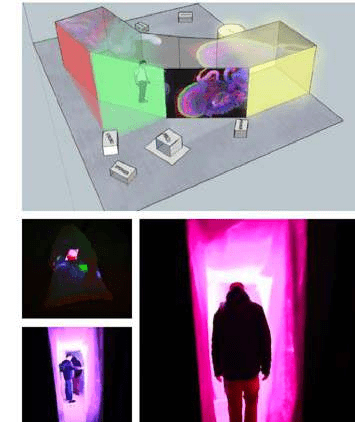
Uphorias is a series of multimedia installations realized in collaboration with the graphic designer Alice Ito.
Inspired by images of cerebral electric activity and MRI studies, we have edited a composition of colored pixel-like forms. They are projected together with a set of light effects from stroboscopes and lasers onto the tunnel, from the outside. This arrangement is often used in clubs to increase feelings of immersion in rave participants as well as to create visual effects sequenced to dance movements. Some ravers experience releases of large amounts of serotonin, which increase cerebral activity and create a sensation of genuine, I quote, “self-discovery”.
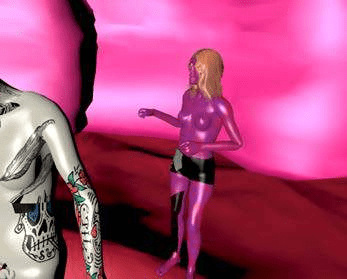


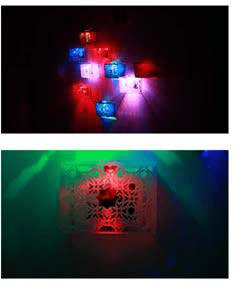
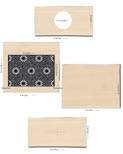
This piece is composed by a series of 16 mini polaroids, displayed in plexiglass boxes. These have their front sides designed as a moucharabieh. The moucharabieh has preserved the intimacy of urban householders in Arabic architectures since the Middle Age. As old medina houses were packed and particularly close one to the other, this structure allowed people to see what was happening in the street without being seen. By adding the changing color led lights and the peepholes in the middle of the moucharabieh as to recall peep shows, the viewer is invited to experience a paradoxical de nition of the structure as he’s led to take a voyeur position to see the photographs through the holes.
